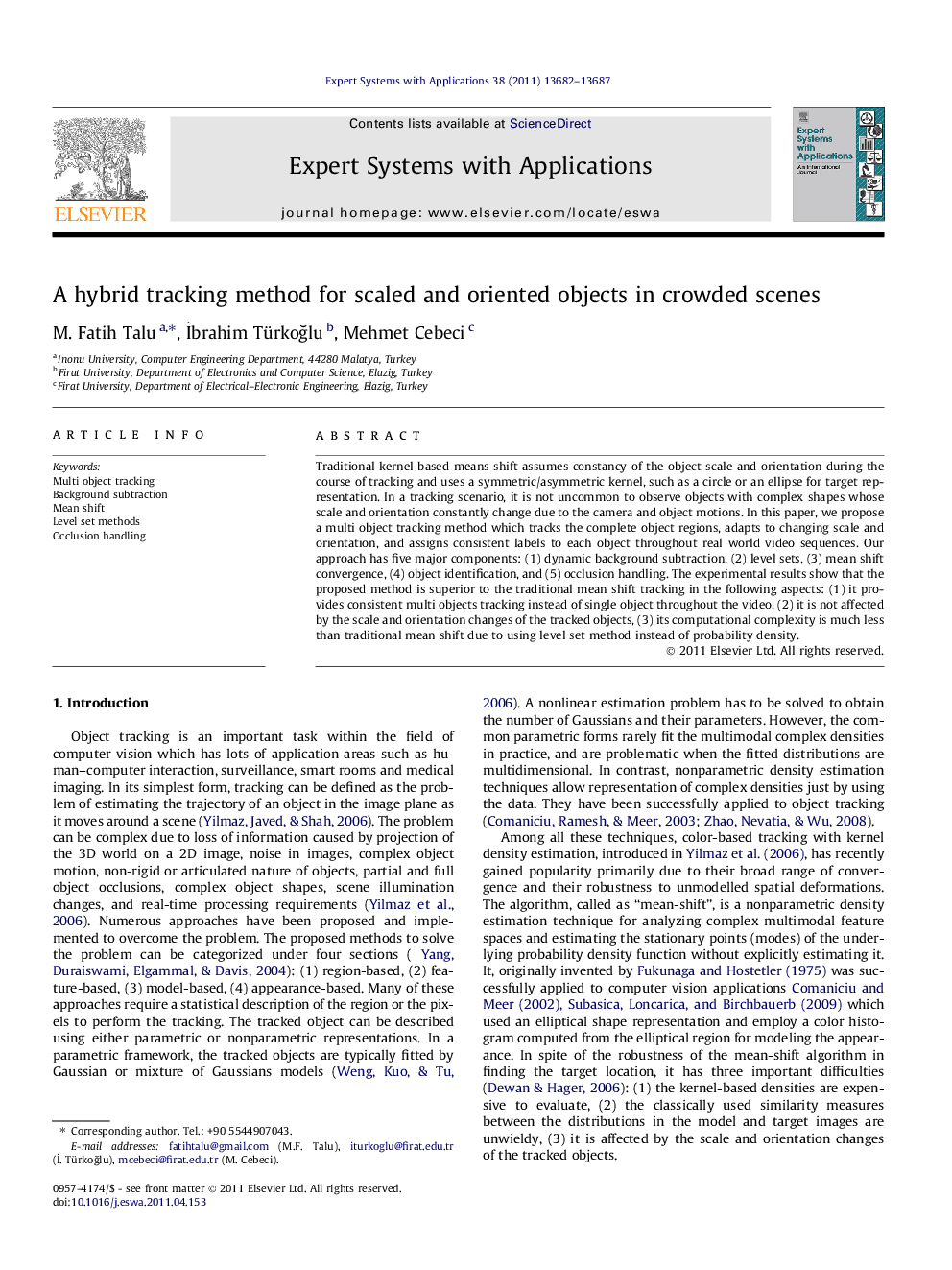| کد مقاله | کد نشریه | سال انتشار | مقاله انگلیسی | نسخه تمام متن |
|---|---|---|---|---|
| 385368 | 660865 | 2011 | 6 صفحه PDF | دانلود رایگان |

Traditional kernel based means shift assumes constancy of the object scale and orientation during the course of tracking and uses a symmetric/asymmetric kernel, such as a circle or an ellipse for target representation. In a tracking scenario, it is not uncommon to observe objects with complex shapes whose scale and orientation constantly change due to the camera and object motions. In this paper, we propose a multi object tracking method which tracks the complete object regions, adapts to changing scale and orientation, and assigns consistent labels to each object throughout real world video sequences. Our approach has five major components: (1) dynamic background subtraction, (2) level sets, (3) mean shift convergence, (4) object identification, and (5) occlusion handling. The experimental results show that the proposed method is superior to the traditional mean shift tracking in the following aspects: (1) it provides consistent multi objects tracking instead of single object throughout the video, (2) it is not affected by the scale and orientation changes of the tracked objects, (3) its computational complexity is much less than traditional mean shift due to using level set method instead of probability density.
► We present a hybrid multi object tracking method.
► It is not affected by the scale and orientation changes of the tracked objects.
► It assigns consistent labels to each moving object throughout real world video sequences.
► It uses the level set method instead of probability density.
► Therefore, its computational complexity is much less than traditional mean shift.
Journal: Expert Systems with Applications - Volume 38, Issue 11, October 2011, Pages 13682–13687